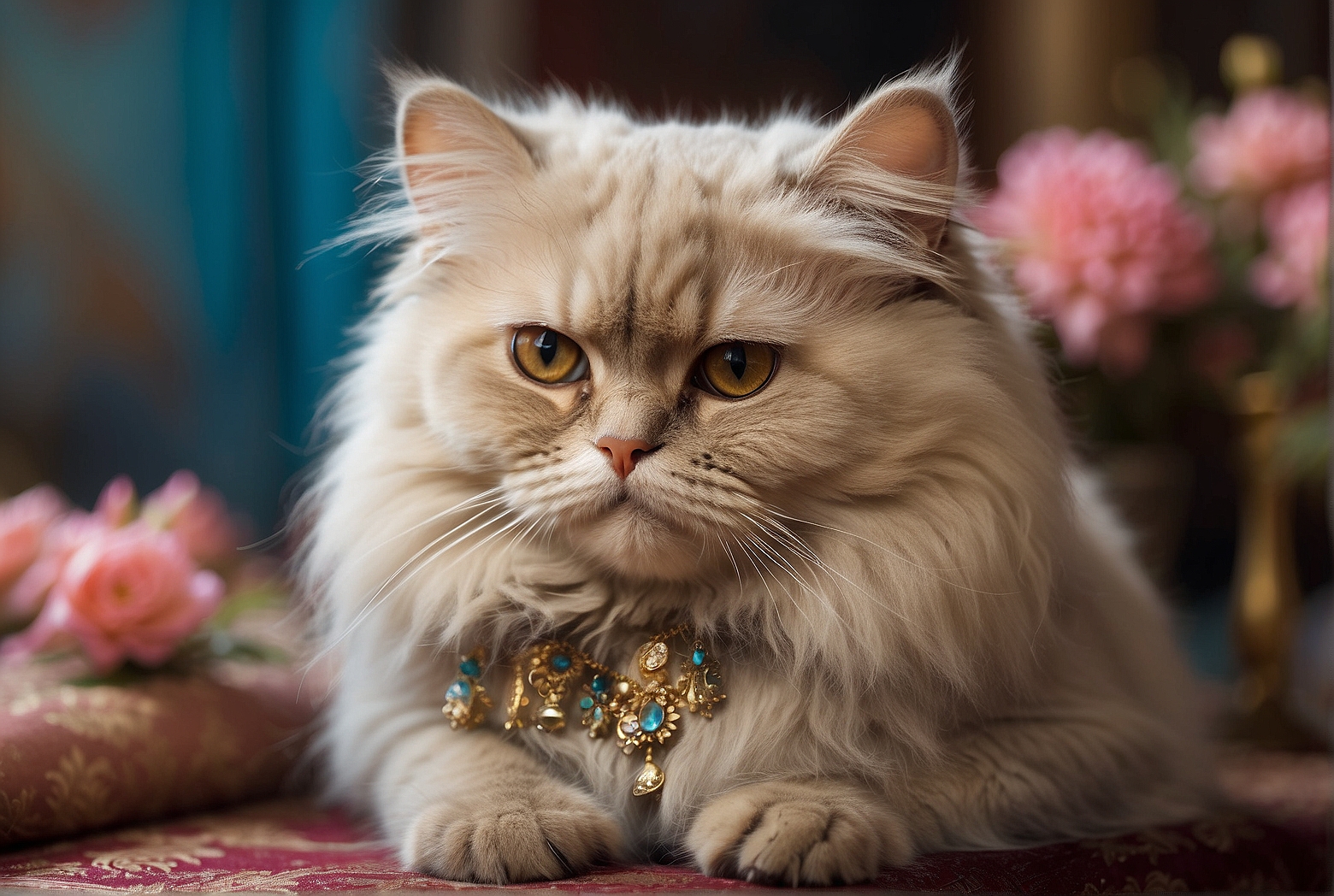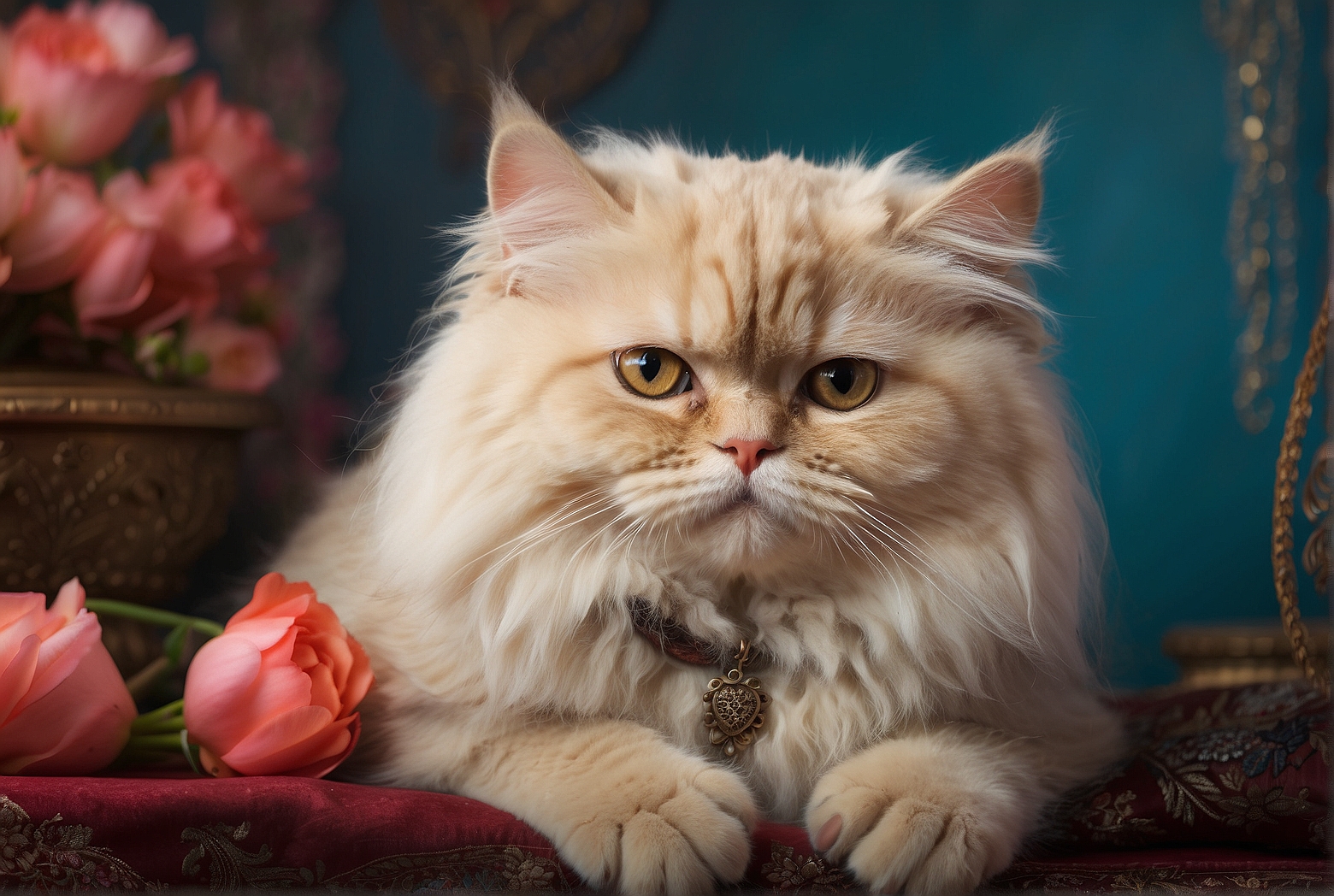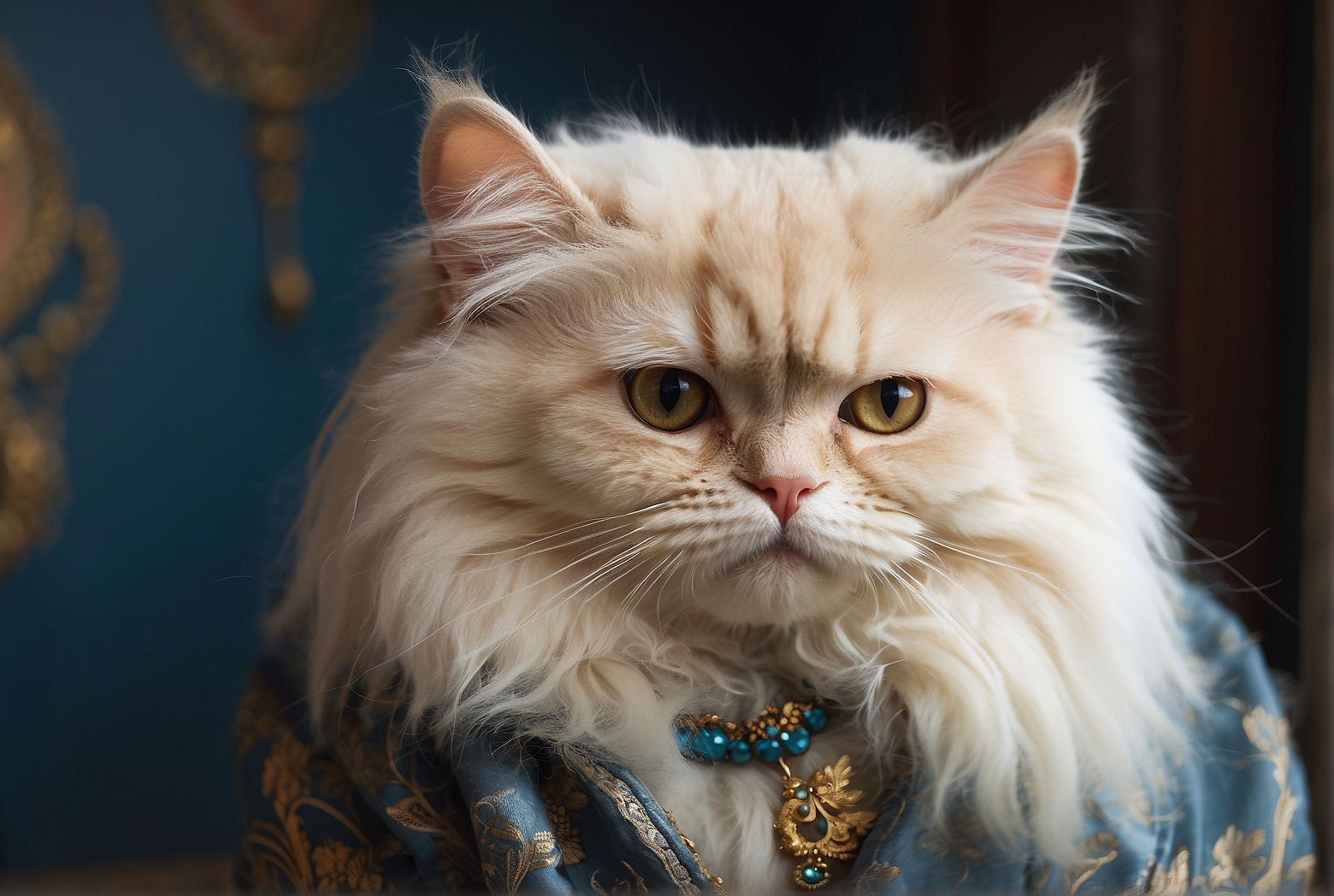Persian cats, beloved for their luxurious long coats and regal appearance, have become one of the most popular cat breeds worldwide. But have you ever wondered where these majestic felines actually come from? Delving into the origins of Persian cats reveals a rich history traced back to ancient times. With their roots believed to stem from Persia (modern-day Iran), these captivating creatures are said to have been introduced to the Western world in the 17th century. Step back in time as we uncover the fascinating journey of Persian cats and how they found their way into the hearts and homes of cat enthusiasts around the globe.
Ancient Origins
The early history of Persian cats
The origins of Persian cats can be traced back thousands of years to ancient Persia, which is now modern-day Iran. These elegant felines have a long and storied history, dating back to the time of the Persian Empire. They were highly prized for their beauty and grace, and were often kept by royalty and nobility.
The role of Persia (modern-day Iran)
Persia, which encompassed present-day Iran, played a significant role in the development and preservation of the Persian cat breed. The region’s favorable climate and geographical location allowed for the flourishing of various animal species, including cats. Persian cats were highly regarded in Persian culture and were associated with wealth, luxury, and sophistication.
Link to royalty and nobility
Persian cats were highly valued by the Persian nobility, who saw them as symbols of status and power. These regal felines were often kept by kings, queens, and members of the royal court. The aristocracy of Persia took great pride in their Persian cats, and they became an integral part of the royal households. Their luxurious and striking appearance made them the perfect companion for the elite.
Introduction to Persia
Geography and culture of Persia
Persia, located in Southwest Asia, boasted a diverse landscape of mountains, deserts, and fertile plains. This geographical diversity contributed to the unique flora and fauna found in the region, including the Persian cat. The Persian culture was rich and vibrant, with a deep appreciation for aesthetics, poetry, and the arts. Cats, particularly Persian cats, occupied a special place in Persian culture and were highly regarded for their beauty and grace.
Love for cats in Persian culture
Cats have held a special place in Persian culture for centuries. They were believed to possess mystical qualities and were often celebrated in paintings, literature, and poetry. Persian literature, such as the works of renowned poets like Rumi and Hafez, frequently made references to cats, emphasizing their elegance, mystery, and companionship.

Early Development of Persian Cats
Selective breeding and mutation
The early development of Persian cats involved selective breeding and natural mutations. Persian cats were bred for their distinct characteristics, such as their long, flowing coats, round faces, and expressive eyes. Over time, breeders selectively bred cats with these desired traits, resulting in the Persian breed we know today. Natural mutations also played a role in shaping the breed, as occasional genetic variations led to the emergence of different coat colors and patterns.
Appearance and characteristics
Persian cats are known for their distinctive appearance and charming characteristics. They have long, silky fur that comes in an array of colors and patterns, including solid, tabby, bi-color, and particolor. Their round faces are adorned with enchanting, large eyes that captivate anyone who gazes into them. Persian cats have a stocky build and a gentle, docile demeanor, making them a favorite choice for cat lovers seeking an affectionate companion.
Spread of Persian cats to other regions
The popularity of Persian cats extended beyond Persia, captivating the hearts of individuals in other regions. Traders and explorers introduced the Persian breed to different parts of the world, including Europe. The distinct characteristics of Persian cats, coupled with their regal aura, quickly made them sought-after pets in various countries. The allure of these captivating felines continued to spread, leading to the establishment of Persian cat clubs and breeding programs globally.
Popularity in Europe
Introduction of Persian cats to Europe
The introduction of Persian cats to Europe marked a significant milestone in the breed’s history. In the 17th century, Italian merchants brought Persian cats to Europe, where they were met with great fascination and admiration. The striking beauty and luxurious appearance of these felines captivated the European aristocracy, who eagerly embraced them as cherished pets.
Influence on cat breeding
The arrival of Persian cats in Europe had a profound influence on the world of cat breeding. The distinct characteristics of these felines, such as their long coats and expressive eyes, sparked a new wave of breeding programs and standards. Persians became a favored breed for cat fanciers and breeders, leading to the establishment of dedicated breeding societies and clubs focused on preserving and refining the breed.
The Persian cat in art and literature
The influence of Persian cats extended beyond the world of cat breeding, making their mark in art and literature. Their regal and alluring appearance inspired many artists, who chose to depict them in paintings and sculptures. Persian cats also found their way into literature, appearing in various poems, novels, and stories. Their beauty and grace became timeless motifs in artistic and literary expressions.

Persian Cats in the United States
First Persian cats in America
The journey of Persian cats to the United States began in the late 19th century. American merchants and travelers who visited Europe were enchanted by these exquisite felines and decided to bring them back to America. The first Persian cats arrived in the United States, where they quickly garnered attention and became highly sought-after pets among the American elite.
Establishment of Persian cat clubs
The arrival of Persian cats in the United States led to the establishment of Persian cat clubs and organizations dedicated to the breed’s preservation and promotion. These clubs became platforms for breeders and enthusiasts to come together, exchange knowledge and expertise, and further refine the breed’s standards. The efforts of these early Persian cat clubs laid the foundation for the breed’s development and popularity in America.
Role of American breeders in shaping the Persian breed
American breeders played a pivotal role in shaping the Persian breed as we know it today. Through meticulous breeding programs and careful selection, American breeders sought to enhance the breed’s desirable traits and maintain its unique characteristics. Their dedication and passion for the Persian cat resulted in the establishment of distinct lines and variations within the breed, contributing to its diversity and appeal.
Different Varieties of Persian Cats
Color patterns and coat types
Persian cats are known for their diverse range of color patterns and coat types. From solid colors such as white, black, and blue to more intricate patterns like tabby and tortoiseshell, Persian cats offer a wide array of choices for cat enthusiasts. Additionally, the Persian breed encompasses various coat types, including longhair and shorthair variations, each possessing its own distinct beauty and charm.
Distinct features of each variety
Each variety of Persian cat showcases its own unique set of features and characteristics. For example, the Himalayan Persian stands out with its striking blue eyes and color-pointed coat, reminiscent of its Siamese ancestry. Chinchilla Persians, on the other hand, display a dazzling silver coat that sparkles in the light. Each variety offers a different personality and appearance, allowing prospective owners to choose the one that best suits their preferences and lifestyle.
Controversies and Challenges
Health issues in Persian cats
While Persian cats are beloved for their beauty and gentle nature, they are not without their health challenges. The breed is prone to certain genetic health issues, including polycystic kidney disease, respiratory problems, and eye conditions such as entropion and progressive retinal atrophy. Responsible breeders prioritize the health and well-being of their cats by conducting regular health screenings and taking measures to minimize the incidence of these inherited conditions.
Ethical concerns in breeding practices
There have been ethical concerns surrounding some breeding practices within the Persian cat community. Unscrupulous breeders may prioritize appearance over the welfare of the cats, leading to unhealthy breeding practices and exaggerated physical features that can impact the breed’s overall health and quality of life. Responsible breeding focuses on maintaining the breed’s integrity while prioritizing the health and well-being of the cats.
Modern Persians
Evolution of the breed in recent years
The Persian breed has continued to evolve in recent years, with breeders striving to improve and maintain the breed’s standards. While the traditional Persian look remains popular, there has been a growing interest in alternative variations, such as the doll-face Persian, which features a less extreme facial structure. Breeders are also working towards producing Persians with improved health and vigor, ensuring the longevity and well-being of the breed for future generations.
New trends in Persian cat breeding
In response to the evolving preferences of cat enthusiasts, new trends have emerged in Persian cat breeding. Breeders are focusing on creating variations with unique coat colors and patterns, such as the golden-shaded Persian and the colorpoint Persian. These new trends offer cat lovers a wider range of choices and contribute to the continued popularity and appeal of the Persian breed.
Global Popularity
Persian cats as popular pets worldwide
Persian cats have gained immense popularity worldwide and are cherished as beloved pets in numerous countries. Their beauty, elegance, and gentle nature make them sought-after companions for individuals and families alike. Whether in North America, Europe, Asia, or beyond, Persian cats have captured the hearts of people around the globe, becoming one of the most popular and recognizable cat breeds.
Cat shows and competitions
The global popularity of Persian cats is further amplified by their participation in cat shows and competitions. These events provide an opportunity for breeders to showcase their finest Persians, highlighting their conformation and beauty. Persian cats often garner top honors and awards, cementing the breed’s reputation and attracting even greater interest from cat enthusiasts worldwide.
Preserving the Persian Cat Breed
Conservation efforts and breed standards
Preserving the Persian cat breed requires dedicated efforts from breeders, clubs, and organizations. Consistent adherence to breed standards is essential to maintain the breed’s unique characteristics and prevent the introduction of undesirable traits. Responsible breeders prioritize the health, temperament, and genetic diversity of their Persians to ensure the preservation of this cherished breed for future generations.
Importance of responsible breeding
Responsible breeding practices are crucial in safeguarding the well-being and future of the Persian cat breed. Breeders should prioritize the health and quality of life of their cats, ensuring proper care, genetic testing, and responsible mate selection. By promoting responsible breeding, the Persian breed can flourish while minimizing the risk of inherited health issues and maintaining the breed’s exceptional charm and appeal.
In conclusion, the ancient origins of Persian cats can be traced back to the regal courts of ancient Persia. Their beauty and grace have captivated people throughout history, leading to their popularity across the globe. From their role in Persian culture to their impact on the world of cat breeding, Persian cats have left an indelible mark on the feline world. As responsible breeders continue to preserve and refine the breed, the future of the Persian cat remains bright, captivating cat lovers for generations to come.
